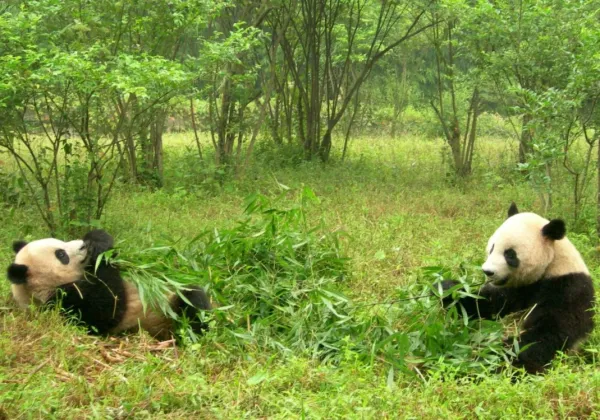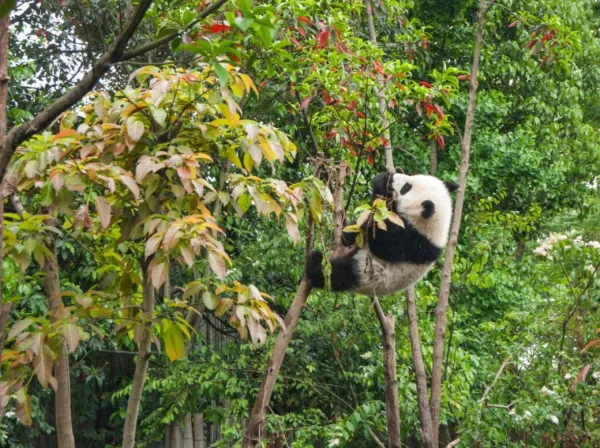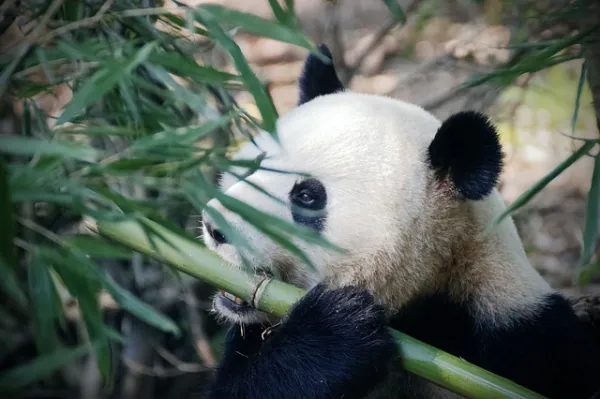The giant panda (Ailuropoda melanoleuca), commonly known simply as the panda, is a mammal belonging to the order Carnivora. However, its diet is mostly herbivorous. While it occasionally consumes insects, bird eggs, or small mammals, its primary food source is bamboo.
A lesser-known fact is that the Chinese name for the panda means “large bear-cat,” referring to the panda’s unique vertical slit pupils that resemble those of cats—a rare trait among bears. If you're curious about this iconic animal, this article will explore in detail the panda’s distribution, natural habitat, survival needs, and conservation status.

Fossil records suggest that the ancestors of today’s pandas once roamed across much of China, Myanmar, and Vietnam, even reaching northern China near Beijing. However, today, wild pandas are found only in the mountainous regions of southwestern China, primarily in Sichuan, Shaanxi, and Gansu provinces.
Their current distribution is concentrated in areas such as the Qinling and Minshan mountains.
Giant pandas are terrestrial animals that prefer temperate mountain forests at elevations between 1,200 and 3,500 meters. These regions are characterized by cool, humid climates with frequent fog and rainfall—conditions that favor bamboo growth.
This moist subtropical climate is crucial not only for the development of over 30 species of bamboo (the panda's main food source) but also for the panda's survival, as they do not hibernate like other bear species.

A Constant Supply of Bamboo
Bamboo makes up nearly the entire diet of a giant panda. An adult panda can consume between 12 and 38 kilograms of bamboo daily, including leaves, stems, and shoots. Without bamboo, pandas simply cannot survive.
A Mild, Humid Climate
Panda cubs are born extremely small and nearly hairless, making them very sensitive to temperature changes. A temperate climate is essential for their survival and early development. When it gets too cold, pandas move to lower altitudes to stay warm.
Secluded Forest Areas
Pandas prefer dense, quiet forests with abundant water and minimal human interference. Such habitats provide ideal conditions for feeding, mating, and rearing cubs.

Fortunately, giant pandas are no longer classified as “endangered.” According to the IUCN Red List, they are now considered “vulnerable.” This means that while their population is improving, they still face significant threats and need continued protection to avoid becoming endangered again.
The panda is considered a “flagship species”—an animal that symbolizes broader wildlife conservation efforts. Because of their popularity and appeal, pandas have attracted significant global attention and funding for conservation, helping stabilize their population.

Nature Reserves and Habitat Corridors
China has established 67 panda nature reserves and several ecological corridors to reconnect fragmented habitats. These efforts protect about two-thirds of the wild panda population.
Captive Breeding and Global Awareness
Though breeding pandas in captivity is notoriously difficult, some zoos around the world have succeeded, contributing to a global gene pool that may help reintroduce pandas to the wild. Despite the controversy around zoos, they play a role in species preservation.
National Conservation Programs
The Chinese government, in collaboration with NGOs and international partners, has implemented robust conservation programs for giant pandas and their habitats, involving legal protections, community involvement, and scientific research.
Habitat Loss and Fragmentation: Infrastructure such as roads and urban development continues to shrink and split panda habitats.
Poaching: Although now illegal, poaching remains a threat in remote areas.
Human Disturbance: Tourism, agriculture, and industrial activity bring noise and pollution into panda habitats, disrupting their natural behaviors.
Most wild panda populations live in the Yangtze River Basin—an area of high economic activity and urbanization. Construction and human expansion have severely fragmented their bamboo forests and made remote areas accessible to illegal hunters.
The panda’s remarkable recovery from the brink of extinction is a conservation success story. But ongoing effort is critical. Expanding protected areas, restoring bamboo forests, and promoting ecological awareness are essential next steps.
If you'd like to learn more about the future of pandas, check out related resources such as “Are Pandas Going Extinct?” or “The Most Endangered Animals in Asia.”
animal tags: giant panda
We created this article in conjunction with AI technology, then made sure it was fact-checked and edited by a Animals Top editor.